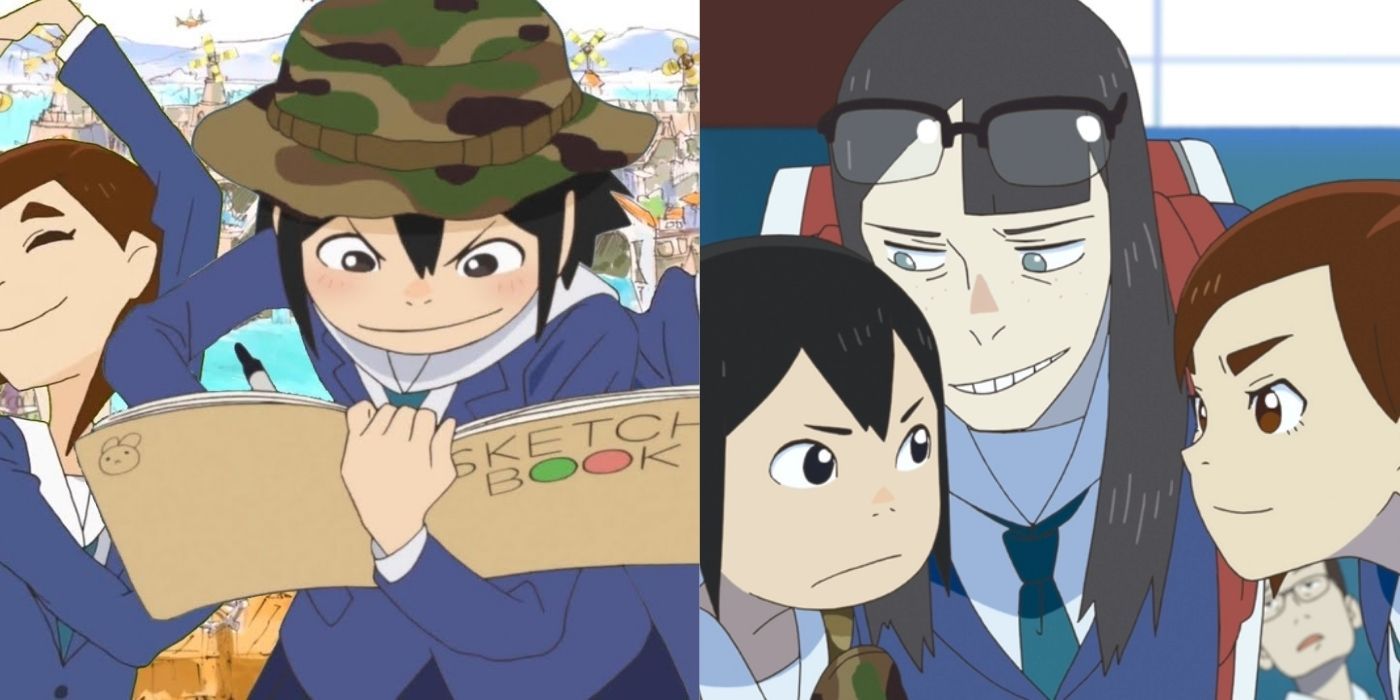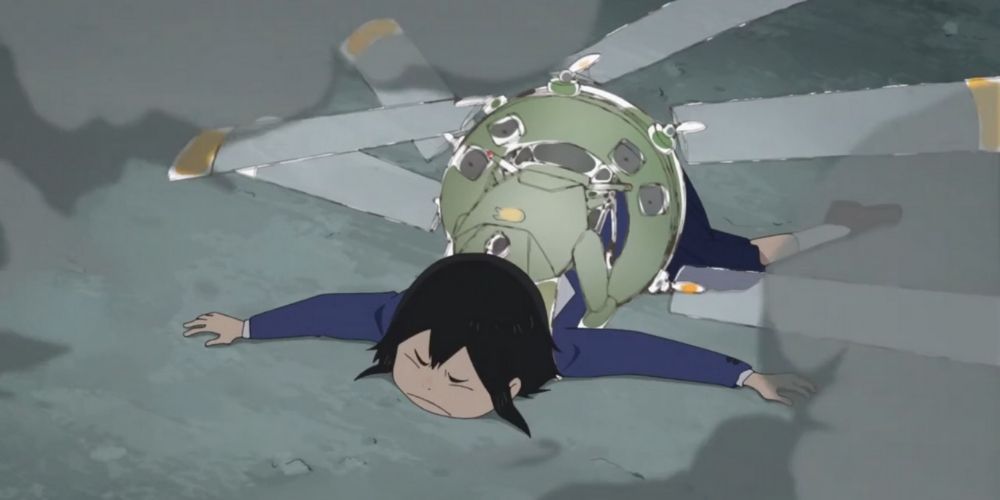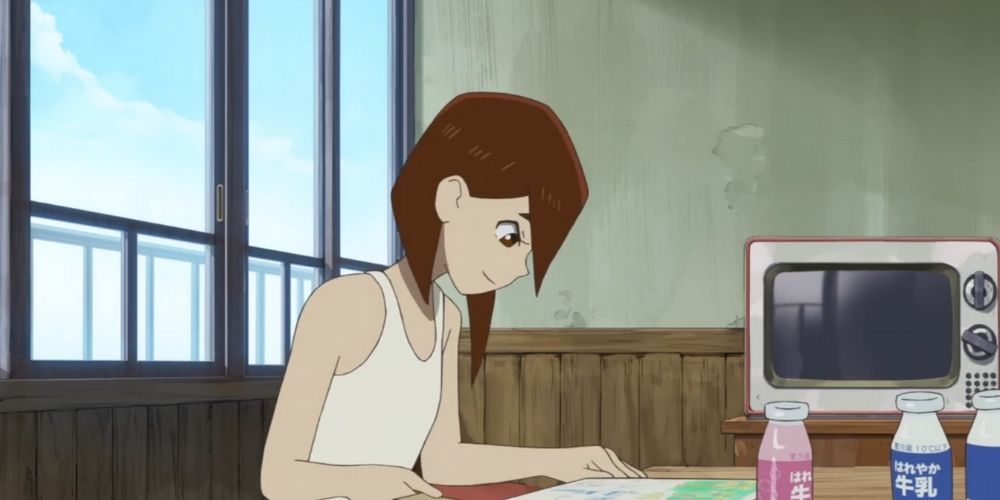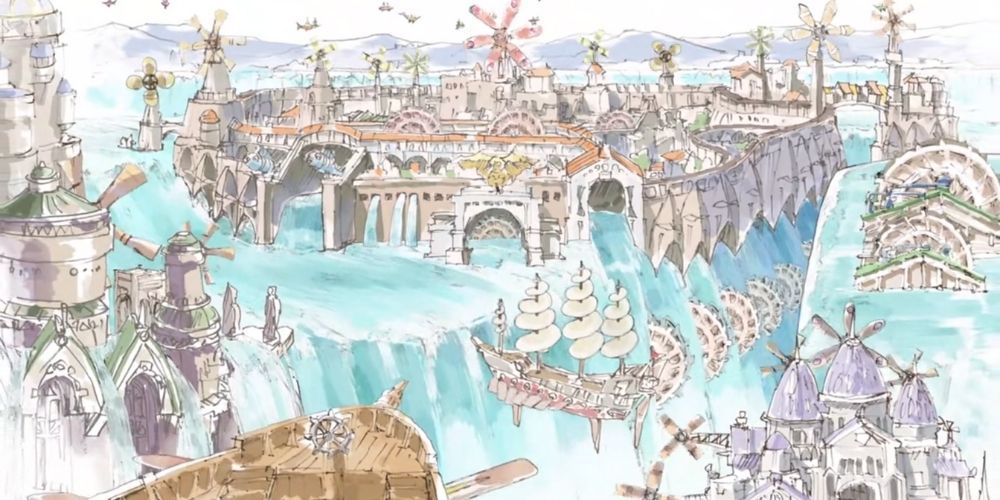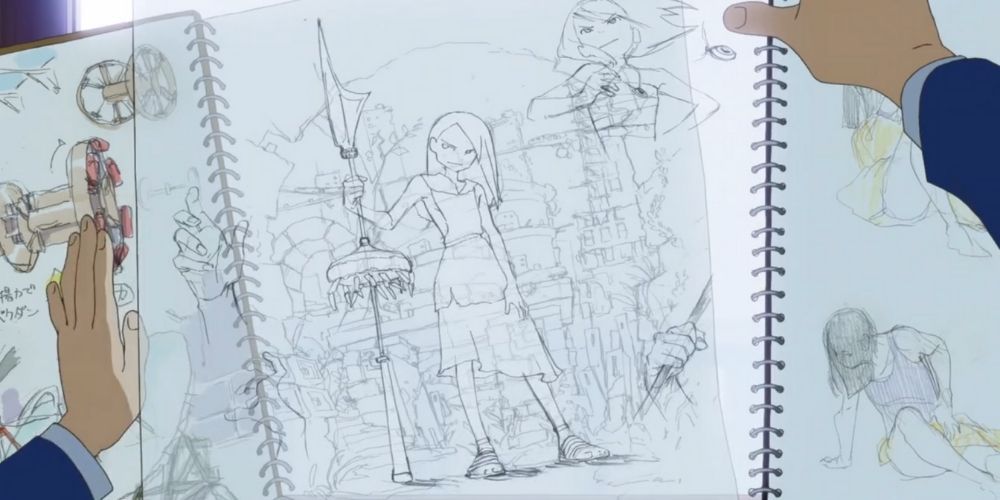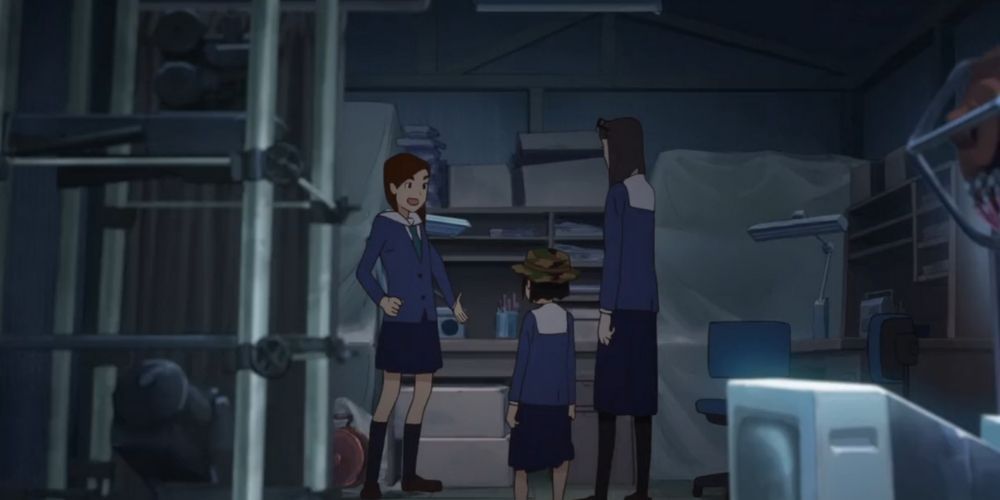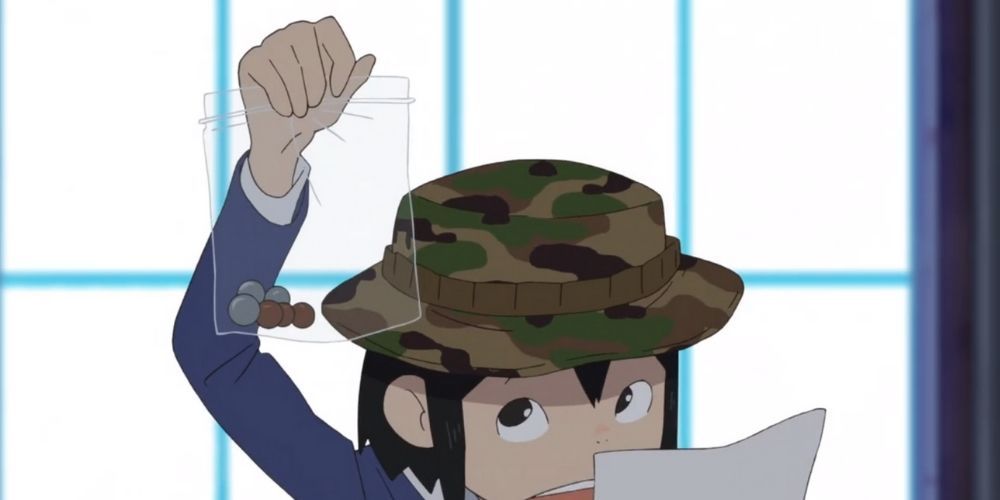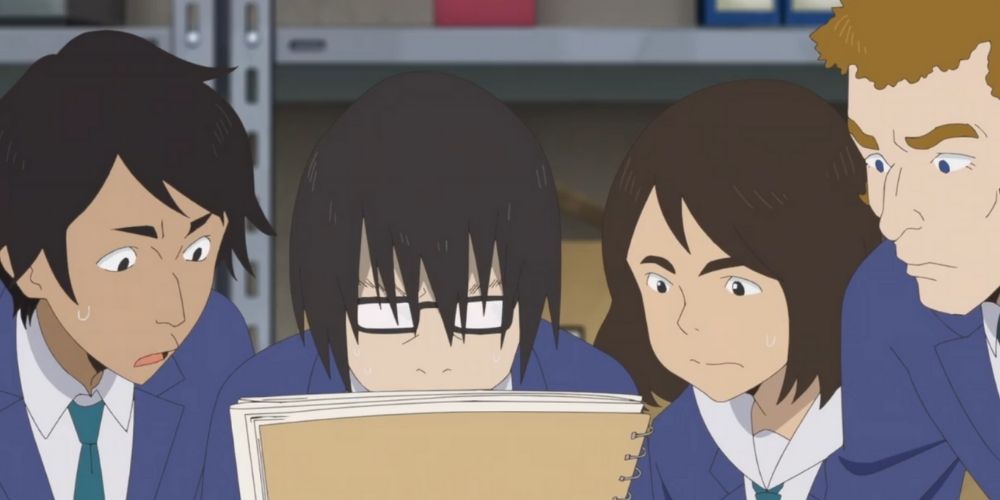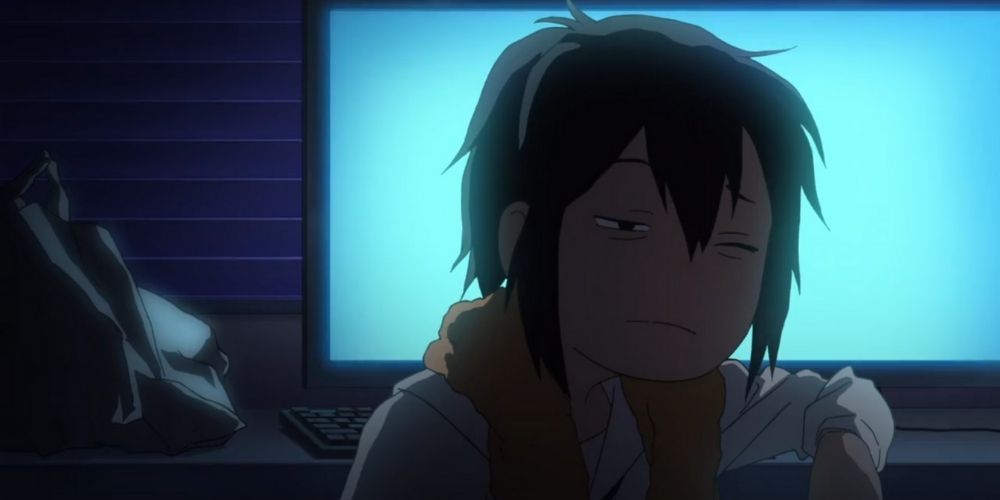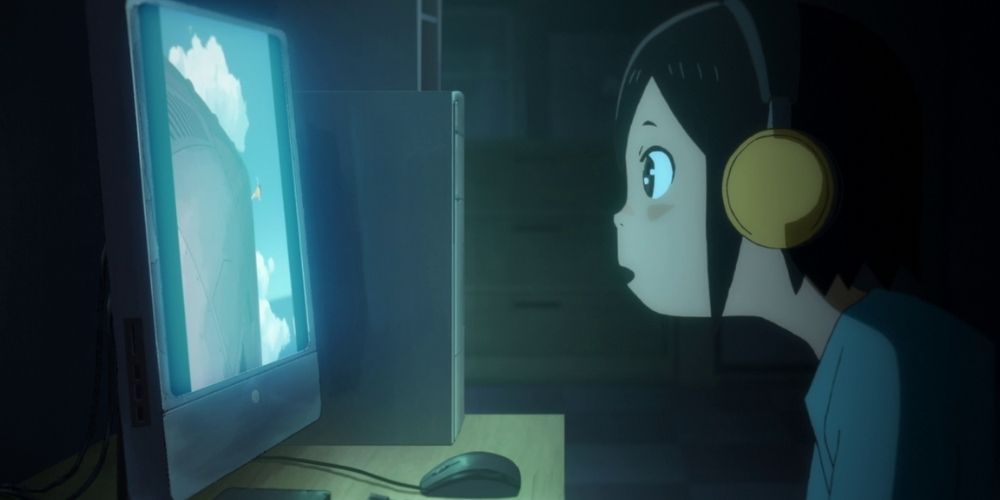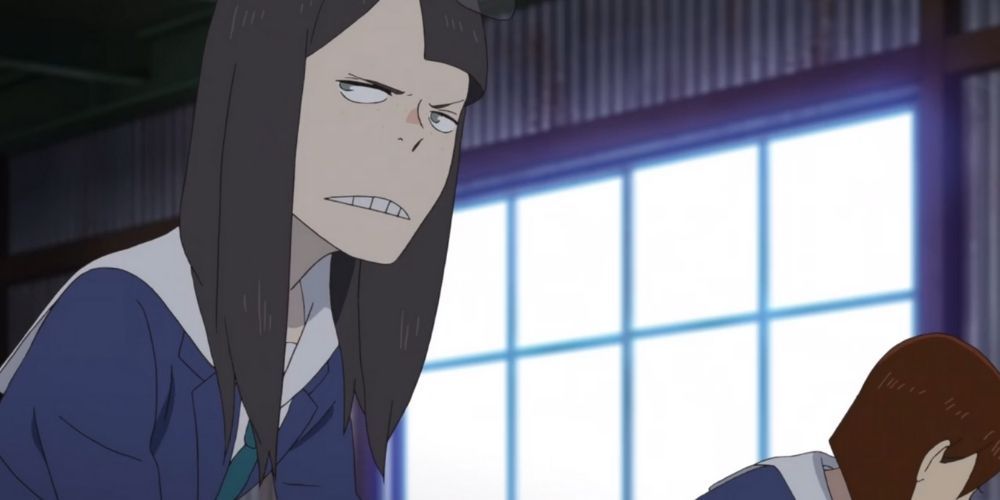The animation industry has flourished in recent years, and there has never been a better time to be a fan of the genre. With thousands of titles to choose from in dozens of genres, there's something for everybody. At the same time, the boom in anime's popularity has not improved the working conditions for animators.
In Masaaki Yuasa's Keep Your Hands Off Eizouken!, high schooler Midori Asakusa and her two friends, the money-hungry Sayaka Kanamori and the aspiring fashion model Tsubame Mizusaki, attempt to create their own anime. They start a video club, called Eizouken, and along the way learn some truths about the anime industry and discover that being an animator is both a joy and a burden.
The Long Hours
It takes a lot of hours to create the scenes in anime that fans know and love. According to surveys of animators in Japan, the average animator works about 230 hours per month. This is true regardless of the position, whether it's an artist, animator, writer, or director, the norm is to work almost all the time.
Asakusa and her friends soon learn how many hours go into creating even a few seconds of animation. They stay up late each night drawing scenes for their animation, but barely make any headway despite the long hours. The girls are forced to cut back on their sleep to devote more time to the project, which ultimately proves unsustainable.
Creative Differences
Anime are creative endeavors that involve myriad artists collaborating together. Every artist has their own creative process and it requires the vision of a director or singularly talented artist to bring all of the different opinions into line so that the finished product is coherent and clean.
In Keep Your Hands Off Eizouken!, Asakusa, Kanamori, and Mizusaki all have different opinions of what the anime should look like. Asakusa prefers to create intricate worlds that are highly detailed, while Mizusaki is interested in delicate reactions between characters. To her credit, Kanamori is simply interested in maximizing the money for the time, but ultimately each of the friends has a different vision for the project.
The Attention to Detail
Many of the most popular anime are set in highly detailed worlds with complex characters and intricate storylines. Complicated emotions have to be written and animated, and believable worlds need to be created to engage viewers and make fans want to keep coming back for more.
During their brainstorming sessions, Asakusa is the one that usually comes up with the big picture ideas. In one scene, she comes up with the idea of a personalized helicopter, but Kanamori accurately points out that the spinning blades would simply cause the pilot's body to rotate. This insight prompts Asakusa to come up with the idea of a rotor that spins in the opposite direction. Attention to tiny details like this is what elevates an anime and helps make it more believable and enjoyable to fans.
Artists Have Different Strengths
Everyone has different strengths, and this is also true in the world of animation. Very few artists create animation in a bubble and must lean on their peers in order to create a good finished product. Some animators specialize in creating backgrounds, while others focus on making characters.
Even though they have very different personalities, Asakusa and Mizusaki work so well together because they each have different strengths. Asakusa is talented at creating designs and backgrounds, and Mizusaki is skilled at drawing characters and faces. Meanwhile, although Kanamori lacks artistic talent, she has a mind for business, and her financial acumen allows her to realize the ambitions of her more idealistic friends.
Equipment Needed
It takes a lot of equipment and resources to create an anime. In addition to having a studio, animators also need video equipment, drawing supplies, and other tools. Additionally, more detailed and intricate sequences may require specialized software programs, furthering complicating the process.
To create their anime, Asakusa and her friends use the equipment provided by their school. While outdated, the animation camera and drawing desk used in the show are great examples of tools that have been used by animators for years. Without the pegboards, paper, cells, and other materials provided by the school, it's doubtful that the young animators would ever have made their dream a reality.
Low Pay And Budget Issues
It's a well-known fact in the anime industry that animators are chronically underpaid. The average animator receives only about $2 per drawing, and salaried positions aren't much better. This is a woefully low amount given the amount of time put into each drawing.
From the beginning, the members of the video club are forced to deal with budget issues. They have to invest the proceeds from the video of Asakusa falling into the necessary repairs for their clubhouse, and their club budget is garnished by the student council for their use of the AV club's sound clips. Thankfully, Kanamori's business instincts manage to keep them afloat after she convinces the town council to invest in their project, but its underscores how money is always a factor in animation.
Tight Deadlines
Tight deadlines have been a feature of the animation industry for years. Studios are expected to deliver a finished product as soon as possible, and animators are expected to make the effort to meet these impossible deadlines.
To validate their club and secure funding, the members of Eizouken plan to submit a short film to the school's student council. However, they only have 55 days to produce their animation. The girls estimate that a five-minute film will take around 3600 individual frames, which would require them to work 24 hours a day for 50 days. They decide to instead produce a three-minute film, but even that proves to be too much within such a short timeframe.
The Physical Toll It Takes On Artists
Due to the long hours and tight deadlines in the animation industry, animators live under immense pressure. Lack of sleep, poor work and life balance, and stress are common complaints amongst animators. Over time, this pressure can take a serious toll on animators' health.
As Asakusa and Mizusaki work on the film that they will submit to the student council, their health quickly begins to deteriorate. Asakusa's mental health begins to falter from lack of sleep and stress, while Mizusaki's hands are depicted as being covered in cuts and bandages due to overwork. The girls pour their entire being into their work, and the physical effort leaves both visible and invisible scars.
The Joy Of Animation
Despite the poor working conditions and low pay, the animation industry is still romanticized by both fans and young animators. Animation is an art form, and the best anime are able to move fans to tears and leave a lasting impression on viewers. Anime can change people's ideas, and reveal aspects about the human experience that are both enlightening and universal.
Like many fans, Asakusa falls in love with animation at a young age after watching Future Boy Conan, a Japanese post-apocalyptic science fiction series. Her passion for animation stays with her, and even when she is stressed or overworked she finds joy in creating scenes. Kanamori notes to Mizusaki that Asakusa manages to find the fun in projects that other people would find tedious, which is a good summary of how working in the animation industry is not for everyone.
The Tension Between Creativity And Necessity
At times, animators are forced to make difficult decisions to meet a deadline or stay within budget. In these moments, creativity runs into the wall of reality and changes must be made. Quality may be sacrificed, but it's a necessary evil to deliver a finished product on time.
Throughout the series, the members of Eizouken have to make tough creative decisions. Asakusa constantly comes up with new ideas, but Kanamori shoots them down due to time or budget constraints. After their musician changes the main music track without their knowledge, they are forced at the last second to change their story in time for the Comet-A convention. Necessity may be the mother of invention but it also leads to long nights for animators.

